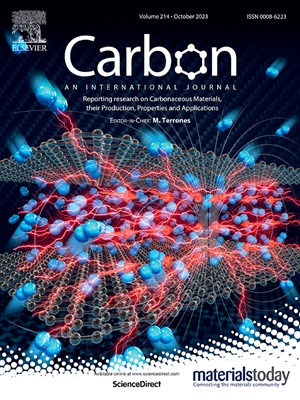利用掺氮石墨烯量子点异质结构实现选择性灵敏金属离子传感的机器学习框架
IF 10.5
2区 材料科学
Q1 CHEMISTRY, PHYSICAL
引用次数: 0
摘要
本文章由计算机程序翻译,如有差异,请以英文原文为准。
Machine learning framework for selective and sensitive metal ion sensing with nitrogen-doped graphene quantum dots heterostructure
This study introduces a machine learning (ML) framework to optimize photodetector performance for sensor applications. Using the data from the fabricated photodetector with the heterostructure of nitrogen-doped graphene quantum dot and gold nanoparticles (Au@N-GQDs), various supervised ML models (more than 20 models) are trained and tested for the selection and refinement of the most effective algorithm for our work. Depending on the best-performed ML model, the optimized working wavelength of the photodetector is found for the detection of metal ions. Remarkably, the ML-based sensor shows a high level of selectivity and sensitivity in nM level towards Fe3+ ions in Brahmaputra river water. A strong alignment between model predictions and experimental outcomes validates the efficacy of the proposed ML-based framework. Moreover, data visualization techniques such as heatmaps, classification algorithms, and confusion matrices are introduced to identify the trends in the database. The mechanistic insight of the sensor performance towards Fe3+ ion sensing is further explained with heatmap analysis and experimental verification, which emphasizes the role of photo-induced charge transfer and Fe–O bond formation between metal ions and Au@N-GQDs due to the high electron affinity of Fe3+ ions.
求助全文
通过发布文献求助,成功后即可免费获取论文全文。
去求助
来源期刊

Carbon
工程技术-材料科学:综合
CiteScore
20.80
自引率
7.30%
发文量
0
审稿时长
23 days
期刊介绍:
The journal Carbon is an international multidisciplinary forum for communicating scientific advances in the field of carbon materials. It reports new findings related to the formation, structure, properties, behaviors, and technological applications of carbons. Carbons are a broad class of ordered or disordered solid phases composed primarily of elemental carbon, including but not limited to carbon black, carbon fibers and filaments, carbon nanotubes, diamond and diamond-like carbon, fullerenes, glassy carbon, graphite, graphene, graphene-oxide, porous carbons, pyrolytic carbon, and other sp2 and non-sp2 hybridized carbon systems. Carbon is the companion title to the open access journal Carbon Trends. Relevant application areas for carbon materials include biology and medicine, catalysis, electronic, optoelectronic, spintronic, high-frequency, and photonic devices, energy storage and conversion systems, environmental applications and water treatment, smart materials and systems, and structural and thermal applications.
 求助内容:
求助内容: 应助结果提醒方式:
应助结果提醒方式:


